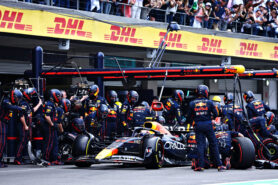Tyre strategy
Tyre strategy is a crucial aspect of Formula 1 Grand Prix racing, as it can significantly impact a driver's performance and chances of winning a race. In simple terms, tyre strategy refers to the decisions teams make about when and how often to change the tyres on their cars during a race.
The tyres used in Formula 1 racing are specifically designed for high-speed performance and are made from a unique combination of rubber compounds that vary in hardness and durability. The different compounds are color-coded, with softer compounds providing better grip but wearing out more quickly, while harder compounds last longer but offer less grip.
A typical Formula 1 race can last for up to two hours, and teams must decide how many pit stops to make during the race to change tyres. They must also choose which compound to use for each pit stop, depending on track conditions, weather, and their car's performance.
The tyre strategy can vary greatly depending on the individual race and team tactics. Some teams may choose to make fewer pit stops and use harder tyres to save time and maintain track position, while others may opt for more pit stops with softer tyres to gain a performance advantage.
In recent years, tyre strategy has become even more critical due to the introduction of Pirelli's "degradation" tyres, which lose performance more quickly than previous tyres, making pit stops more frequent.
Tyre strategy is an essential aspect of Formula 1 racing that can make the difference between winning and losing a race. Teams must carefully consider a range of factors, including track conditions, weather, car performance, and driver feedback, to make the best decisions about when to pit and which tyres to use. By getting the tyre strategy right, teams can gain a significant advantage over their rivals and increase their chances of success on the track.












LAST 3 F1 Fan COMMENTS